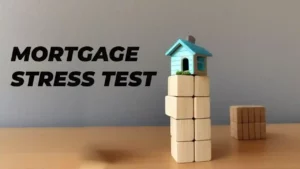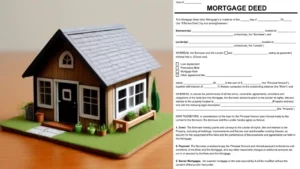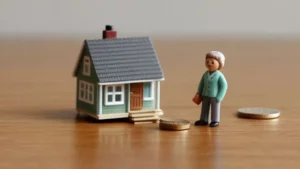Mortgagerateslocal.com – Are you happy with your mortgage? Or do you feel like you’re paying too much for it? If you’re not sure, you’re not alone. Many homeowners don’t realize that they could be saving money on their mortgage.
Some do refinancing, switching lenders, or making some changes to their financial habits. Your mortgage is one of the most significant expenses you have, and it can have a massive impact on your financial well-being.
That’s why it’s important to know if you’re getting the best deal possible, or if you’re paying more than you need to. We’ll show you signs that you’re paying too much for your mortgage, and what you can do to lower your monthly payments and save money in the long run.
We’ll also explain how to get the best mortgage rate possible, and how to avoid some common pitfalls that can cost you money. Whether you’re a first-time homebuyer, a seasoned homeowner, or somewhere in between
Signs You’re Paying Too Much For Your Mortgage
By the end of this article, you’ll have a better understanding of your mortgage, and you’ll be able to make smarter decisions that will benefit your wallet and your future.
Sign 1: Your Interest Rate Is Higher Than The Current Market Rate
One of the most obvious signs that you’re paying too much for your mortgage is if your interest rate is higher than the current market rate. Interest rates change over time, depending on the economy, the demand for loans, and the policies of the Federal Reserve.
If you took out your mortgage a few years ago, when rates were higher, you might be paying more interest than you would if you got a new loan today. To find out if your interest rate is higher than the current market rate, you can use online tools like Bankrate or Rocket Mortgage to compare mortgage rates from different lenders.
You can also check the average mortgage rates reported by Freddie Mac, which tracks the trends and changes in the mortgage market. If you find out that your interest rate is higher than the current market rate, you might want to consider refinancing your mortgage.
Refinancing means getting a new loan with a lower interest rate and better terms, and using it to pay off your existing loan. By refinancing, you can lower your monthly payments, reduce the total amount of interest you pay, and shorten the term of your loan.
However, refinancing is not always the best option for everyone. There are some costs and fees involved, such as closing costs, appraisal fees, and origination fees. You also need to have a good credit score, a stable income, and enough equity in your home to qualify for a new loan. You should also consider how long you plan to stay in your home, and whether the savings from refinancing will outweigh the costs.
Sign 2: Signs You’re Paying Too Much For Your Mortgage Term Is Too Long
Another signs you’re paying too much for your mortgage is if your mortgage term is too long. Your mortgage term is the number of years you have to pay off your loan. The longer your term, the lower your monthly payments, but the more interest you pay over time.
For example, let’s say you have a $300,000 loan with a 6% interest rate. If you have a 30-year term, your monthly payment will be $1,798.65, and you’ll pay a total of $347,514.57 in interest. But if you have a 15-year term, your monthly payment will be $2,531.57, and you’ll pay a total of $155,682.69 in interest. That’s a difference of $191,831.88 in interest!
As you can see, a shorter term can save you a lot of money in interest, but it also means a higher monthly payment. That’s why you need to balance your budget and your goals when choosing your mortgage term. You should pick a term that you can afford, but also one that will help you pay off your loan faster and build equity in your home.
If you have a long-term mortgage and you want to pay it off sooner, you have a few options. One option is to refinance your loan to a shorter term, as we discussed in the previous section. Another option is to make extra payments on your principal, which will reduce your balance and shorten your term.
You can do this by making biweekly payments instead of monthly payments, or by adding a lump sum to your regular payment. However, before you do this, you should check with your lender if there are any prepayment penalties or fees that might apply.
Sign 3: Signs You’re Paying Too Much For Your Mortgage Has An Adjustable Rate
Next signs you’re paying too much for your mortgage is if your mortgage has an adjustable rate. An adjustable-rate mortgage (ARM) is a type of loan that has a variable interest rate that changes periodically, usually every year, based on an index and a margin. The index is a benchmark rate that reflects the market conditions, and the margin is a fixed percentage that the lender adds to the index.
The advantage of an ARM is that it usually starts with a lower interest rate than a fixed-rate mortgage, which means a lower monthly payment. The disadvantage is that the rate can change over time, and it can go up or down depending on the market. This means that your monthly payment can also change, and it can become unpredictable and unaffordable.
If you have an ARM, you should be aware of the following terms:
- Initial rate: This is the rate that applies for the first period of the loan, usually 1, 3, 5, 7, or 10 years. This rate is usually lower than the market rate, and it’s fixed for the duration of the period.
- Adjustment period: This is the frequency at which the rate changes after the initial period. For example, a 5/1 ARM has a 5-year initial period and a 1-year adjustment period, which means that the rate changes every year after the first 5 years.
- Rate cap: This is the limit on how much the rate can change at each adjustment. For example, a 2/6 cap means that the rate can change by up to 2% at each adjustment, and by up to 6% over the life of the loan.
- Payment cap: This is the limit on how much the payment can change at each adjustment. For example, a 7.5% cap means that the payment can change by up to 7.5% at each adjustment, regardless of the rate change.
If you have an ARM, you should pay attention to these terms and how they affect your payment. You should also keep track of the index and the margin, and how they change over time. You can find this information on your loan documents, your monthly statements, or your lender’s website.
If you have an ARM and you’re worried about the rate and payment changes, you might want to consider switching to a fixed-rate mortgage. A fixed-rate mortgage has a constant interest rate and payment for the entire term of the loan, which gives you more stability and peace of mind.
However, switching to a fixed-rate mortgage might mean a higher interest rate and payment than your current ARM, depending on the market conditions. You should compare the costs and benefits of both options and decide what works best for you.
Sign 4: Signs You’re Paying Too Much For Your Mortgage Has A High PMI
A fourth signs you’re paying too much for your mortgage is if your mortgage has a high private mortgage insurance (PMI) premium. PMI is a type of insurance that protects the lender in case you default on your loan. PMI is usually required if you make a down payment of less than 20% of the home’s value, because the lender considers you a higher-risk borrower.
PMI is an extra cost that you have to pay on top of your principal, interest, taxes, and insurance. PMI can range from 0.5% to 1.5% of your loan amount per year, depending on your credit score, loan-to-value ratio, and loan type. For example, if you have a $300,000 loan with a 10% down payment and a 0.75% PMI rate, you’ll pay $1,875 per year, or $156.25 per month, in PMI.
PMI can add up to a lot of money over time, and it doesn’t help you build equity in your home. That’s why you should try to avoid PMI or get rid of it as soon as possible. Here are some ways to do that:
- Make a larger down payment: The more money you put down, the less PMI you’ll have to pay. If you can save up 20% or more of the home’s value, you can avoid PMI altogether.
- Choose a different loan type: Some loan types, such as VA loans and USDA loans, don’t require PMI, even if you make a low or no down payment. However, these loans have other eligibility requirements and fees that you should consider.
- Refinance your loan: If your home’s value has increased, or if you’ve paid down your loan balance, you might be able to refinance your loan to a lower PMI rate or eliminate PMI
Sign 5: Your Mortgage Has A High APR
Next signs you’re paying too much for your mortgage is if your mortgage has a high annual percentage rate (APR). APR is a measure of the total cost of borrowing, including the interest rate and any fees and charges. APR is different from the interest rate, which is only the cost of the interest. APR gives you a more accurate picture of how much you’re paying for your loan.
If you find out that your APR is higher than the average APR, you might want to look for ways to lower it. One way is to negotiate with your lender to reduce or waive some of the fees and charges, such as origination fees, application fees, or appraisal fees.
Another way is to improve your credit score, which can help you qualify for a lower interest rate and a lower APR. You can improve your credit score by paying your bills on time, keeping your credit card balances low, and checking your credit report for errors.
Sign 6: Your Mortgage Has A Balloon Payment
Signs You’re Paying Too Much for Your Mortgage is if your mortgage has a balloon payment. A balloon payment is a large lump sum that you have to pay at the end of your loan term, after making smaller monthly payments for a certain period. A balloon payment is usually much larger than your regular payments, and it can be tens or hundreds of thousands of dollars.
A balloon payment can be a problem for several reasons. First, it can be hard to save up enough money to pay it off, especially if you have other debts or expenses. Second, it can be risky to rely on refinancing or selling your home to pay it off, because you might not be able to get a new loan or a good price for your home when the time comes. Third, it can be stressful to live with the uncertainty of not knowing if you can afford to pay it off or not.
If you have a mortgage with a balloon payment, you should try to get rid of it as soon as possible. One way is to refinance your loan to a conventional mortgage, which has a fixed or adjustable rate and a regular amortization schedule.
Another way is to make extra payments on your principal, which will reduce your balance and your balloon payment. However, before you do this, you should check with your lender if there are any prepayment penalties or fees that might apply.
Sign 7: Your Mortgage Has A Prepayment Penalty
A seventh sign that you’re paying too much for your mortgage is if your mortgage has a prepayment penalty. A prepayment penalty is a fee that the lender charges you if you pay off your loan early, either by refinancing, selling your home, or making extra payments. A prepayment penalty is meant to compensate the lender for the lost interest and fees that they would have earned if you kept paying your loan.
A prepayment penalty can be a hindrance for several reasons. First, it can discourage you from paying off your loan faster, which can save you money in interest and help you build equity in your home. Second, it can limit your options to refinance or sell your home, which can help you get a better deal or move to a different place. Third, it can add to your closing costs, which can reduce your net proceeds or increase your debt.
If you have a mortgage with a prepayment penalty, you should try to avoid it or minimize it as much as possible. One way is to negotiate with your lender to waive or reduce the prepayment penalty, especially if you have a good reason to pay off your loan early, such as a job loss, a divorce, or a health issue.
Another way is to wait until the prepayment penalty expires, which usually happens after a certain number of years or payments. You should check your loan documents or your lender’s website to find out the terms and conditions of your prepayment penalty.
Sign 8: Your Mortgage Has A Negative Amortization
An eighth sign that you’re paying too much for your mortgage is if your mortgage has a negative amortization. A negative amortization is a situation where your monthly payment is not enough to cover the interest on your loan, and the difference is added to your principal.
This means that your loan balance increases over time, instead of decreasing. This can happen with some types of loans, such as interest-only loans, payment-option ARMs, or graduated-payment mortgages.
A negative amortization can be a problem for several reasons. First, it can reduce your equity in your home, which can make it harder to refinance or sell your home. Second, it can increase your debt, which can affect your credit score and your ability to borrow. Third, it can lead to a payment shock, which is a sudden and large increase in your monthly payment, when your loan adjusts or recasts.
If you have a mortgage with a negative amortization, you should try to stop it or reverse it as soon as possible. One way is to switch to a fully amortizing payment, which is a payment that covers both the interest and the principal on your loan.
Another way is to make extra payments on your principal, which will reduce your balance and your interest. However, before you do this, you should check with your lender if there are any prepayment penalties or fees that might apply.
Sign 9: Your Mortgage Has A High LTV Ratio
A ninth sign that you’re paying too much for your mortgage is if your mortgage has a high loan-to-value (LTV) ratio. LTV ratio is the percentage of your home’s value that you owe on your loan. For example, if your home is worth $300,000 and you owe $240,000 on your loan, your LTV ratio is 80%. The higher your LTV ratio, the more risk you pose to the lender, and the more you pay for your loan.
A high LTV ratio can be a problem for several reasons. First, it can make it harder to refinance or sell your home, because you might not have enough equity to cover the closing costs or the down payment for a new loan. Second, it can make you pay more for your loan, because you might have to pay a higher interest rate, a higher PMI, or a higher APR. Third, it can make you vulnerable to negative equity, which is a situation where you owe more on your loan than your home is worth, if your home’s value drops.
If you have a mortgage with a high LTV ratio, you should try to lower it as much as possible. One way is to pay down your loan balance, either by making extra payments or by refinancing to a shorter term. Another way is to increase your home’s value, either by making improvements or by waiting for the market to appreciate. However, before you do this, you should check with your lender if there are any prepayment penalties or fees that might apply.
Sign 10: Your Mortgage Has A High DTI Ratio
A tenth and final sign that you’re paying too much for your mortgage is if your mortgage has a high debt-to-income (DTI) ratio. DTI ratio is the percentage of your monthly income that goes toward paying your debts, including your mortgage, credit cards, car loans, student loans, and other obligations. For example, if your monthly income is $5,000 and your monthly debt payments are $2,000, your DTI ratio is 40%. The lower your DTI ratio, the more money you have left for your other expenses and savings.
A high DTI ratio can be a problem for several reasons. First, it can make it harder to qualify for a new loan, because lenders use your DTI ratio to assess your ability to repay your debt. Second, it can make you pay more for your loan, because lenders might charge you a higher interest rate, a higher PMI, or a higher APR. Third, it can make you vulnerable to financial stress, which can affect your health, your relationships, and your quality of life.
If you have a mortgage with a high DTI ratio, you should try to lower it as much as possible. One way is to reduce your debt, either by paying off your balances, consolidating your loans, or negotiating with your creditors. Another way is to increase your income, either by asking for a raise, getting a second job, or starting a side hustle. However, before you do this, you should check with your lender if there are any prepayment penalties or fees that might apply.
How To Get The Best Mortgage Rate Possible
Now that you know how to avoid paying too much for your mortgage, you might be wondering how to get the best mortgage rate possible. After all, your mortgage rate is one of the most important factors that determine how much you pay for your loan.
Getting the best mortgage rate possible is not a one-time event, but a continuous process that requires some research, planning, and negotiation. Here are some tips that can help you get the best mortgage rate possible:
- Shop around: Don’t settle for the first offer you get from your bank or lender. Compare rates and terms from different lenders, including online lenders, credit unions, and brokers. You can use online tools like Bankrate or Rocket Mortgage to compare mortgage rates from different lenders. You can also ask for quotes from multiple lenders, and compare the fees and charges that they include in their offers.
- Improve your credit score: Your credit score is one of the main factors that lenders use to determine your mortgage rate. The higher your credit score, the lower your mortgage rate. You can improve your credit score by paying your bills on time, keeping your credit card balances low, and checking your credit report for errors. You can get a free copy of your credit report from each of the three major credit bureaus once a year at AnnualCreditReport.com.
- Save for a larger down payment: Your down payment is another factor that affects your mortgage rate. The more money you put down, the lower your mortgage rate. This is because a larger down payment reduces the risk for the lender, and shows that you have more skin in the game. If you can save up 20% or more of the home’s value, you can also avoid paying PMI, which can lower your monthly payment and your APR.
- Choose the right loan type and term: Your loan type and term also influence your mortgage rate. Different loan types, such as conventional, FHA, VA, or USDA, have different eligibility requirements, fees, and rates. You should choose the loan type that suits your needs and qualifications. Your loan term, or the number of years you have to pay off your loan, also affects your mortgage rate. Generally, shorter terms have lower rates, but higher payments, while longer terms have higher rates, but lower payments. You should choose the loan term that you can afford, but also one that will help you pay off your loan faster and save money in interest.
- Negotiate with your lender: Finally, you can try to negotiate with your lender to get a better mortgage rate. You can ask your lender to match or beat the offers from other lenders, or to waive or reduce some of the fees and charges that they include in their offer. You can also ask your lender to lock in your rate for a certain period, so that you can secure your rate before it changes. However, you should be prepared to provide proof of your income, assets, and credit score, and to pay a fee for the rate lock.
Conclusion
Your mortgage is one of the most important financial decisions you make, and it can have a huge impact on your financial well-being. That’s why you should always make sure that you’re getting the best deal possible, and that you’re not paying more than you need to.
We’ve shown you signs that you’re paying too much for your mortgage, and what you can do to lower your monthly payments and save money in the long run. We hope that this information has been helpful and that you’ve learned something new.




